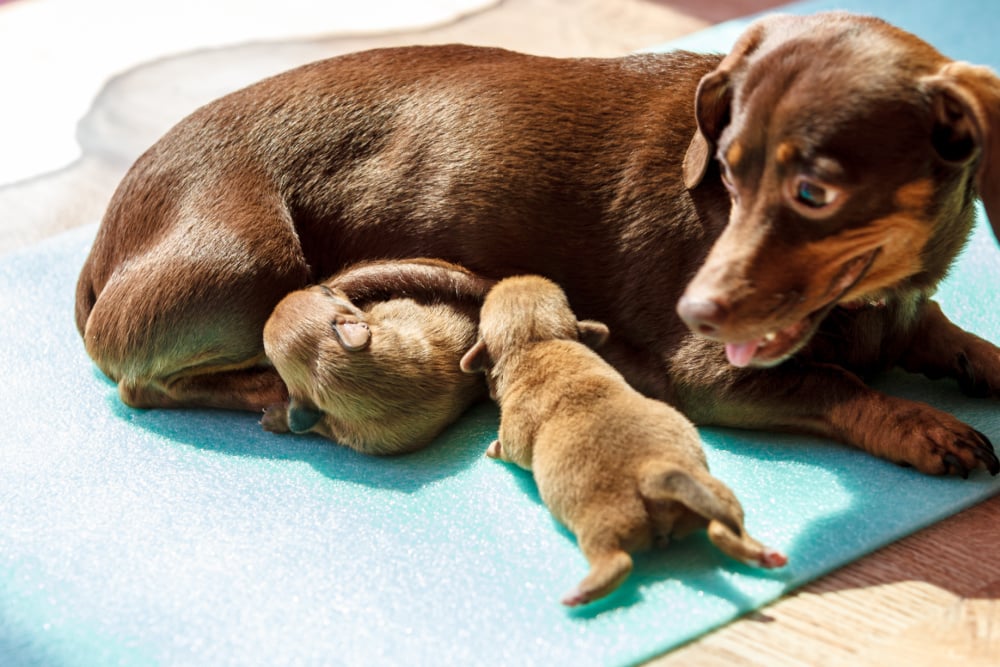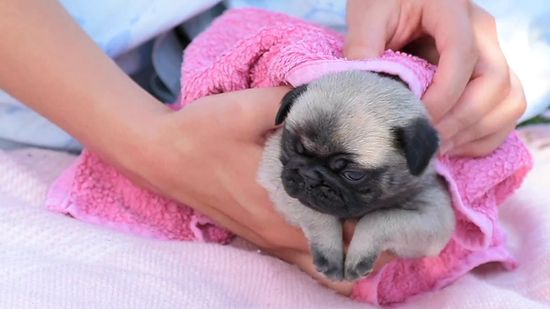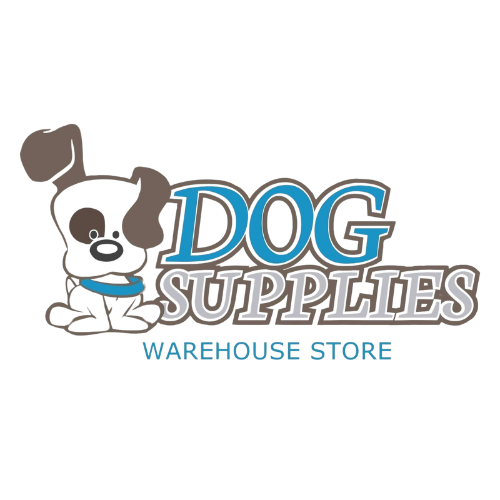Caring for a newborn puppy is a rewarding experience, but it comes with its own set of challenges. Hygiene plays a key role in a puppy’s overall health, and new owners often wonder about the appropriate time to bathe their puppies. Bathing a puppy too early can lead to a variety of health risks, and it’s important to understand the right time and process to ensure the safety and well-being of these fragile creatures. In this article, we’ll explore when it’s safe to bathe a newborn puppy, the signs that indicate they’re ready for their first bath, and important precautions to take when doing so.
The Importance of Waiting to Bathe Newborn Puppies
Newborn puppies are delicate and depend heavily on their mother for many of their initial needs, including cleanliness. In their earliest days, the mother dog instinctively cleans her puppies by licking them. This not only keeps the puppies clean but also stimulates their bodily functions and helps maintain their body temperature. For this reason, regular bathing is not necessary during the first few weeks of life, and in fact, it can be harmful. Puppies are born with underdeveloped immune systems, making them highly vulnerable to infections, cold temperatures, and stress. Bathing them too early can expose them to these risks.

Because of these vulnerabilities, it’s essential to wait until the puppies have developed stronger immune systems and can regulate their own body temperature before introducing them to a full bath. Instead of bathing, it’s better to let the mother handle hygiene in the early stages. However, there may be special circumstances that require more immediate intervention, such as when puppies become soiled by something potentially harmful or when their natural cleaning is insufficient.
When Is It Safe to Bathe a Newborn Puppy?
The ideal time to bathe a puppy is usually around eight weeks of age. By this time, puppies are typically weaned from their mother and begin developing a more robust immune system, making them more resilient to external factors. At eight weeks, puppies are also able to regulate their body temperature better, which reduces the risk of hypothermia that younger puppies face when exposed to water and cold environments. This stage in their growth marks a transition from complete dependence on their mother to a more independent life, which includes the ability to handle basic hygiene through bathing.
Of course, there are some exceptions to this guideline. In cases where puppies get dirty from feces or urine, or are exposed to harmful chemicals or substances, a bath may be necessary before the eight-week mark. However, such baths should be done with extra caution and preferably under the advice of a veterinarian. Spot cleaning with a damp cloth is a better alternative during the first few weeks, as it helps clean the puppy without exposing them to the risks associated with full submersion in water.

Recognizing the Signs That Your Puppy Is Ready for a Bath
While eight weeks is a general guideline, it’s important to observe specific signs in your puppy’s development before considering a bath. One clear indicator is the puppy’s behavior and physical growth. Puppies that are more active, curious, and eating solid food are generally ready for their first bath, as these milestones indicate that their bodies are stronger and more capable of handling minor stresses. Additionally, if your puppy’s coat becomes visibly dirty or starts to emit an odor, this might be another sign that they are ready for their first bath.
However, if you have any doubts about whether your puppy is ready, it’s always a good idea to consult a veterinarian. The vet can assess the health of your puppy and provide personalized advice on whether it’s time for their first bath. This is especially important for puppies with underlying health conditions or those that come from particularly large or weak litters.
How to Bathe a Puppy Safely
Once you determine that your puppy is ready for a bath, it’s important to follow certain guidelines to ensure the experience is as safe and stress-free as possible. Preparation is key when it comes to bathing puppies. Before you start, make sure the environment is warm and free from drafts, as puppies are more sensitive to temperature changes than adult dogs. You’ll also need to have all your supplies ready, including a soft towel, a puppy-safe shampoo, and a cup or container for gently pouring water.

Begin the bath by introducing your puppy to the water slowly. Use lukewarm water, ensuring that the water temperature is comfortable to the touch but not too hot. It’s important to avoid submerging the puppy entirely; instead, use a small amount of water in a shallow basin. Gently wet the puppy’s fur, avoiding sensitive areas like the eyes, ears, and nose. Lather a small amount of puppy-specific shampoo into the fur, being cautious not to scrub too vigorously. Puppies have delicate skin, so it’s crucial to handle them gently throughout the process.
After shampooing, thoroughly rinse the puppy’s fur to remove any soap residue. This step is important because leftover shampoo can cause skin irritation. Once the bath is complete, use a soft towel to pat the puppy dry. If the weather is cool, consider using a blow dryer on a low, warm setting, but always monitor the puppy closely to prevent overheating.
Precautions to Take When Bathing Newborn Puppies
Bathing a puppy may seem straightforward, but there are several important precautions to take into account. First and foremost, temperature control is essential. Newborn puppies are especially vulnerable to cold, so keeping the bathing area warm is critical. After the bath, make sure to dry the puppy quickly and thoroughly to avoid any risk of hypothermia.
Handling the puppy with care is another key consideration. Puppies can be squirmy, especially if they are nervous about their first bath. Always hold the puppy securely but gently to ensure they feel safe. Over-bathing is another issue to be mindful of. Bathing too frequently can strip the natural oils from a puppy’s skin, leading to dryness and irritation. A bath every few months, or as needed based on the puppy’s cleanliness, is generally sufficient for most breeds.
Finally, it’s essential to monitor your puppy’s skin after the bath. Puppies have sensitive skin, and some may react negatively to certain shampoos, even those labeled for puppies. Look out for any signs of redness, irritation, or itching after the bath, and if any reactions occur, consult your vet for advice on alternative products or remedies.
Aftercare: Keeping Your Puppy Comfortable After Bathing
Bath time doesn’t end once the puppy is dry. After the bath, it’s important to make sure the puppy stays warm and comfortable. Puppies may feel tired or a little stressed after their first bath, so providing them with a soft, cozy space to rest is key. Avoid exposing the puppy to cold environments, especially in the hours following the bath, to ensure they remain comfortable and healthy.
Positive reinforcement can also go a long way in making the bath experience more enjoyable for your puppy. Offering gentle praise or treats after the bath can help the puppy associate bath time with positive feelings, making future baths easier and less stressful. Over time, your puppy will grow more accustomed to the bathing process, and it may even become a fun bonding experience between you and your pet.
Bathing a newborn puppy requires careful timing, patience, and attention to detail. While it’s tempting to bathe a dirty puppy right away, it’s important to wait until they are physically ready—usually around eight weeks of age. Following proper steps during the bath and paying attention to your puppy’s comfort and health will ensure the experience is safe and beneficial for their overall well-being. With the right approach, bath time can become an enjoyable part of your puppy’s care routine as they grow into a healthy, happy dog.

After 5 years in a high pace business management role, I partnered with an e-commerce developer to start building Dog Supplies Warehouse.
Our number one goal is to make sure all products are managed and delivered to our customers door fast and accurately.
